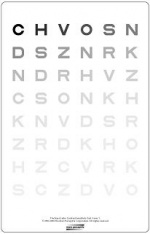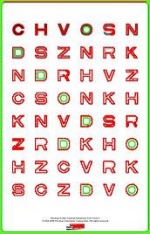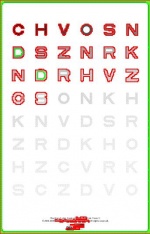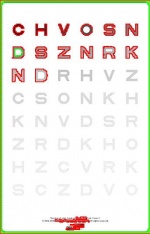This page is a part of the Computer Vision Wiki. The wiki is devoted to computer vision, especially low level computer vision, digital image analysis, and applications. The exposition is geared towards software developers, especially beginners. The wiki contains discussions of computer vision and related issues, mathematics, algorithms, code snippets, source code, and compiled software. Copyright © Intelligent Perception
Human vision vs. computer vision
From Computer Vision Wiki
The image on the left reads “Hello!”. To see that, copy the “blank” image and sharpen it with any photo editing software (”Auto Contrast” in Photoshop). However, you need to do that only for the sake of humans - computers don’t need it! If you run Pixcavator, the result will be similar to the image on the right.
Humans can only recognize about 30 levels of gray while standard image formats have 256. Since the text is in virtually white (254) on white (255) background, it is invisible.
Computer can vary its contrast perception just like humans. The images below show how the number of objects declines as the contrast threshold increases: 0, 30, 50, 70, 125.
This last example was based on the failure to see small variations of luminosity. Now we have an almost identical example except it is based on the fact that humans can’t detect subtle variation of color (under fixed luminosity). The “blank” cyan rectangle below contains my initials “PS” which is found and displayed by Pixcavator on the right. The text written in color (0,254,255) – in the RGB model - that is only slightly different from the background (0,255,254). It is invisible to us but not to the computer. Once again my point is that image enhancement tools have nothing to do with computer vision.

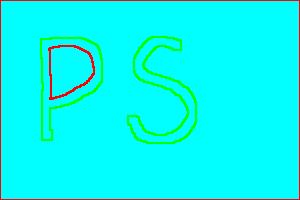
To verify that the image on the left contains the text you do need Photoshop again. This time Auto Contrast won’t help, but Smart Fix does work.
Consider the optical illusion shown here [1].
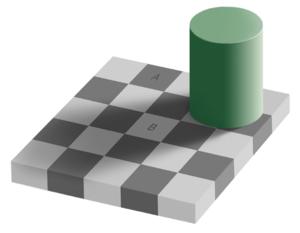

Of two identical squares on the chessboard, A appears darker than B because A is surrounded by squares that are darker than A while B by squares lighter than B. It seems that your eyes fool you... but from the point of view of our approach it does not matter! Indeed, A is a "dark" object and B is "light". So, Pixcavator follows human vision in a way.
See also Lengths of curves for examples of how computer fails at Measuring objects.
Digital discoveries
- Casinos Not On Gamstop
- Non Gamstop Casinos
- Casino Not On Gamstop
- Casino Not On Gamstop
- Non Gamstop Casinos UK
- Casino Sites Not On Gamstop
- Siti Non Aams
- Casino Online Non Aams
- Non Gamstop Casinos UK
- UK Casino Not On Gamstop
- Non Gamstop Casino UK
- UK Casinos Not On Gamstop
- UK Casino Not On Gamstop
- Non Gamstop Casino UK
- Non Gamstop Casinos
- Non Gamstop Casino Sites UK
- Best Non Gamstop Casinos
- Casino Sites Not On Gamstop
- Casino En Ligne Fiable
- UK Online Casinos Not On Gamstop
- Online Betting Sites UK
- Meilleur Site Casino En Ligne
- Migliori Casino Non Aams
- Best Non Gamstop Casino
- Crypto Casinos
- Meilleur Site Casino En Ligne Belgique
- Bookmaker Non Aams



